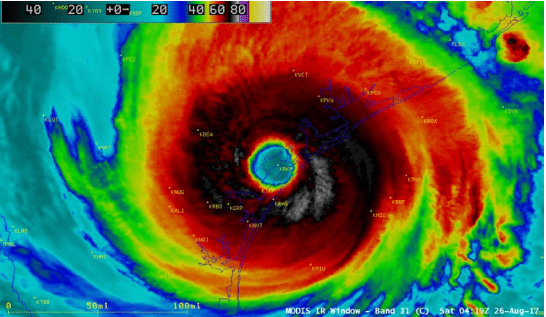Understanding the True Flood Risks of Tropical Cyclones
New research led by IIHR Director Gabriele Villarini, working in cooperation with partners at The Water Institute of the Gulf, Louisiana State University, Purdue University, and elsewhere, has developed a probabilistic rainfall generator to provide crucial precipitation data for more accurate modeling of tropical cyclones in coastal states on the Gulf and Atlantic coasts.
“Rather than trying to develop the best rainfall model possible by minimizing the uncertainties between the simulated and the observed rainfall during a tropical cyclone, what I wanted to do was actually to embrace these uncertainties,” Villarini says.
As Hurricane Ida slammed into New Orleans, Americans held their breath, remembering the scenes of flooding and destruction that Hurricanes Katrina and Harvey left in their wake. Katrina brought a huge storm surge to New Orleans but not too much rain. Other tropical cyclones drop unreal amounts of rain, like the 50+ inches seen in some areas of Texas during Hurricane Harvey.

Hurricane Harvey.
A Category 4 hurricane, Harvey had it all: 130-mph winds, historic rainfall, and a massive storm surge that swamped coastal areas. “Everyone remembers the news and what Houston looked like,” says Hugh Roberts, senior vice president and chief operating officer at The Water Institute of the Gulf, an independent, nonprofit, applied research institution advancing science and developing integrated methods to solve complex environmental and societal challenges. Roberts says that storm surge, heavy rains, and many other hydrologic characteristics, such as soil moisture — “all these things compounding combine to tell an important story about what our real flood risk is.”
To fully calculate and understand the true flood risks associated with tropical cyclones or TCs (an umbrella term that includes hurricanes), scientists need a framework to evaluate flooding related to both rainfall and storm surge. Until recently, the commonly used hydrodynamic models used to simulate coastal flooding incorporated only storm surge.
New research led by University of Iowa Professor of Civil and Environmental Engineering Gabriele Villarini, working in cooperation with partners at the Water Institute, Louisiana State University, Purdue University, and elsewhere, has developed a probabilistic rainfall generator to provide crucial precipitation data for more accurate modeling of TCs in coastal states on the Gulf and Atlantic coasts. Villarini, who is also the director of IIHR—Hydroscience & Engineering, says that the rainfall generator takes a new approach.
“Rather than trying to develop the best rainfall model possible by minimizing the uncertainties between the simulated and the observed rainfall during a tropical cyclone, what I wanted to do was actually to embrace these uncertainties,” Villarini says. Instead of refining the model to minimize the errors that occur, he accepted them and characterized them.
“We started with an existing tropical-cyclone rainfall model. We then corrected its estimates for biases and leveraged the residual variability between observed and modeled rainfall to develop the probabilistic component,” Villarini explains. “This is different from the vast majority of existing approaches, which provide deterministic estimates of the rainfall associated with these storms.”
Adding the rainfall data to the hydrologic and hydraulic models allows researchers to better understand the flood risks for people living in coastal areas, such as those in Louisiana and Texas, where compounding flood effects are particularly important to a full understanding of flood risks. “Now we have a framework that allows us to incorporate different components,” Villarini says. “Coastal and riverine flooding, all in one.”
Roberts says it’s impossible to overstate the importance of the rainfall generator. “It’s the keystone in many ways,” Roberts says. “It is a really critical step in the advancement in this space and this field.”
The goal of this improved modeling, which looks holistically at various hazards and puts them all together, is to better inform citizens and decision-makers about the true flood risk in coastal areas.
“Gabriele’s rainfall generator is the piece of the puzzle that allows us to associate a variety of rainfall fields with any given hurricane,” Roberts says. “I would go as far as saying that the creation of the TC rainfall generator, in conjunction with the advancement of joint probability methods led by David Johnson at Purdue, is the important step. It’s critical to open up other doors for how we can improve.”
He adds, “We can then actually set up our experimental design appropriately and then really, truly understand these compound effects — everything from high surge-low rainfall to high rainfall-high surge.”
Knowledge is power, with flooding as in so many other areas of life, and smart, informed decision-making for infrastructure design and policy depends on good information.
Results of Villarini’s work (with co-authors Wei Zhang, Paul Miller, David R. Johnson, Lauren E. Grimley, and Hugh J. Roberts) were published in a recent issue of the International Journal of Climatology.




